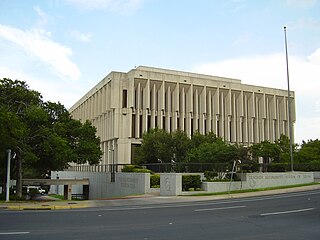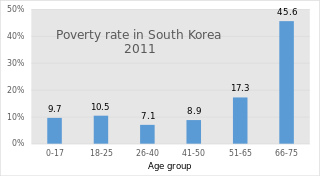
A pension is a fund into which amounts are paid regularly during the individual's working career, and from which periodic payments are made to support the person's retirement from work. A pension may be:

In the United States, Social Security is the commonly used term for the federal Old-Age, Survivors, and Disability Insurance (OASDI) program and is administered by the Social Security Administration (SSA). The original Social Security Act was enacted in 1935, and the current version of the Act, as amended, encompasses several social welfare and social insurance programs.

The United States Social Security Administration (SSA) is an independent agency of the U.S. federal government that administers Social Security, a social insurance program consisting of retirement, disability and survivor benefits. To qualify for most of these benefits, most workers pay Social Security taxes on their earnings; the claimant's benefits are based on the wage earner's contributions. Otherwise benefits such as Supplemental Security Income (SSI) are given based on need.
A disability pension is a form of pension given to those people who are permanently or temporarily unable to work due to a disability.

The U.S. Railroad Retirement Board (RRB) is an independent agency in the executive branch of the United States government created in 1935 to administer a social insurance program providing retirement benefits to the country's railroad workers.
The Federal Employees' Retirement System (FERS) is the retirement system for employees within the United States civil service. FERS became effective January 1, 1987, to replace the Civil Service Retirement System (CSRS) and to conform federal retirement plans in line with those in the private sector.
In the United States, an annuity is a financial product which offers tax-deferred growth and which usually offers benefits such as an income for life. Typically these are offered as structured (insurance) products that each state approves and regulates in which case they are designed using a mortality table and mainly guaranteed by a life insurer. There are many different varieties of annuities sold by carriers. In a typical scenario, an investor will make a single cash premium to own an annuity. After the policy is issued the owner may elect to annuitize the contract for a chosen period of time. This process is called annuitization and can also provide a predictable, guaranteed stream of future income during retirement until the death of the annuitant. Alternatively, an investor can defer annuitizing their contract to get larger payments later, hedge long-term care cost increases, or maximize a lump sum death benefit for a named beneficiary.
The Illinois Municipal Retirement Fund is the second largest and best-funded public pension system in Illinois. Since 1941, has partnered with local units of government to provide retirement, disability and death benefits for public employees. With a funded status of about 98 percent and more than $50 billion in assets, IMRF is well-funded and sustainable.
In the United States, public sector pensions are offered at the federal, state, and local levels of government. They are available to most, but not all, public sector employees. These employer contributions to these plans typically vest after some period of time, e.g. 5 years of service. These plans may be defined-benefit or defined-contribution pension plans, but the former have been most widely used by public agencies in the U.S. throughout the late twentieth century. Some local governments do not offer defined-benefit pensions but may offer a defined contribution plan. In many states, public employee pension plans are known as Public Employee Retirement Systems (PERS).
A life annuity is an annuity, or series of payments at fixed intervals, paid while the purchaser is alive. The majority of life annuities are insurance products sold or issued by life insurance companies however substantial case law indicates that annuity products are not necessarily insurance products.
Retirement Insurance Benefits or old-age insurance benefits are a form of social insurance payments made by the U.S. Social Security Administration paid based upon the attainment of old age. Benefit payments are made on the 3rd of the month, or the 2nd, 3rd, or 4th Wednesday of the month, based upon the date of birth and entitlement to other benefits.

Teacher Retirement System of Texas (TRS) is a public pension plan of the State of Texas. Established in 1937, TRS provides retirement and related benefits for those employed by the public schools, colleges, and universities supported by the State of Texas and manages a $180 billion trust fund established to finance member benefits. More than 1.6 million public education and higher education employees and retirees participate in the system. TRS is the largest public retirement system in Texas in both membership and assets and the sixth largest public pension fund in America. The agency is headquartered at 1000 Red River Street in the capital city of Austin.
The Indiana State Teachers’ Retirement Fund (TRF) was created by the Indiana General Assembly in 1921. Today, TRF manages and distributes the retirement benefit of educators in all public schools, as well as some charter schools and universities, throughout Indiana. Headed by a governor-appointed executive director, as well as a six-member Board of Trustees, TRF aims to prudently manage the Fund in accordance with fiduciary standards, provide quality benefits, and deliver a high level of service to TRF members while demonstrating responsibility to citizens of the State.
The National Pension System (NPS) is a defined-contribution pension system in India regulated by Pension Fund Regulatory and Development Authority (PFRDA) which is under the jurisdiction of Ministry of Finance of the Government of India. National Pension System Trust was established by PFRDA as per the provisions of the Indian Trusts Act of 1882 for taking care of the assets and funds under this scheme for the best interest of the subscriber.

Social security or welfare in Finland is very comprehensive compared to what almost all other countries provide. In the late 1980s, Finland had one of the world's most advanced welfare systems, which guaranteed decent living conditions to all Finns. Created almost entirely during the first three decades after World War II, the social security system was an outgrowth of the traditional Nordic belief that the state is not inherently hostile to the well-being of its citizens and can intervene benevolently on their behalf. According to some social historians, the basis of this belief was a relatively benign history that had allowed the gradual emergence of a free and independent peasantry in the Nordic countries and had curtailed the dominance of the nobility and the subsequent formation of a powerful right wing. Finland's history was harsher than the histories of the other Nordic countries but didn't prevent the country from following their path of social development.

The State Universities Retirement System, or SURS, is an agency in the U.S. state of Illinois government that administers retirement, disability, death, and survivor benefits to eligible SURS participants and annuitants. Membership in SURS is attained through employment with 61 employing agencies, including public universities, community colleges, and other qualified state agencies. Eligible employees are automatically enrolled in SURS when employment begins.
Oklahoma Teacher's Retirement System (OTRS) is the pension program for public education employees in the State of Oklahoma. As of June 30, 2014, the program had nearly 168,000 members. Public education teachers and administrators are required to be OTRS members; support staff can join voluntarily. State law established OTRS in 1943 to manage retirement funds and provide financial security for public education employees. Its first checks to retirees were sent out in 1947. It is administered by a staff and 14-member board of trustees. Its current executive director is Tom Spencer, who started in that position on November 1, 2014.
The Michigan Office of Retirement Services (ORS) administers retirement programs for Michigan's state employees, public school employees, judges, state police, and National Guard. ORS also provides various retiree healthcare benefits, including traditional insurance plans, Personal Healthcare Funds, and Health Reimbursement Accounts. ORS serves over 530,000 customers, representing one out of every fourteen Michigan adults. ORS customers live in approximately one out of every nine Michigan households. The state employee system and the public school employee system administered by ORS make up 95 percent of all active plan membership in Michigan. ORS is responsible for the 18th largest public pension system in the United States and the 47th largest pension system in the world, managing combined net assets of nearly $67.8 billion. In fiscal year 2017, ORS paid out over $7.3 billion in pension and health benefits. According to the Pensionomics 2016 report from the National Institute on Retirement Security, pensions paid to Michigan retirees generated $11.1 billion in total spending in the state of Michigan. A Pew study ranks ORS in the top ten state pension systems for paying the highest percentage of their annual required contribution for pension plans, which demonstrates a commitment to fiscal responsibility. ORS is a division of Michigan's Department of Technology, Management, and Budget (DTMB).
The Swiss pension system rests on three pillars:

South Korea's pension scheme was introduced relatively recently, compared to other democratic nations. Half of the country's population aged 65 and over lives in relative poverty, or nearly four times the 13% average for member countries of the Organisation for Economic Co-operation and Development (OECD). This makes old age poverty an urgent social problem. Public social spending by general government is half the OECD average, and is the lowest as a percentage of GDP among OECD member countries.








